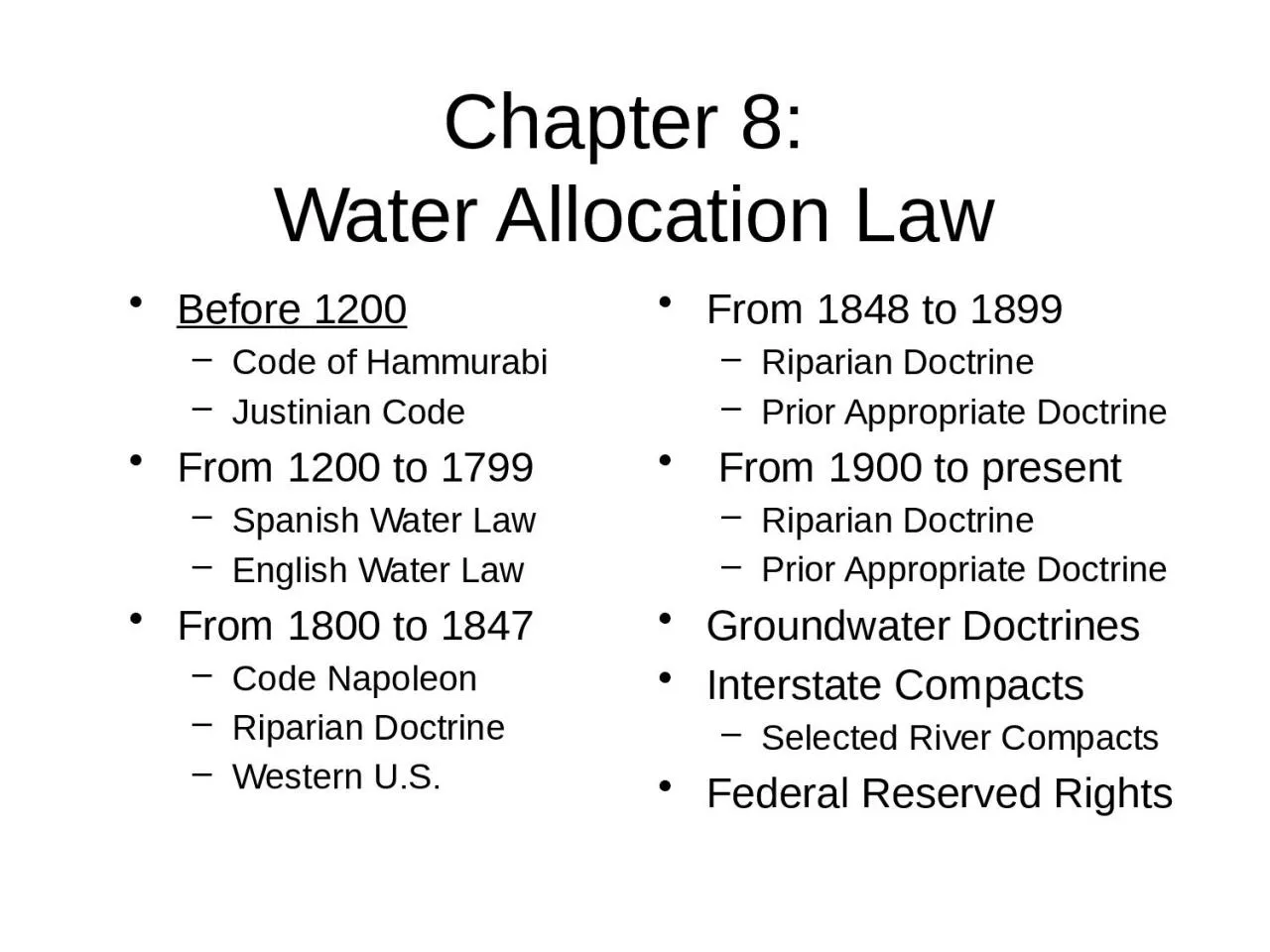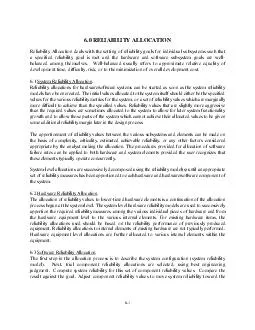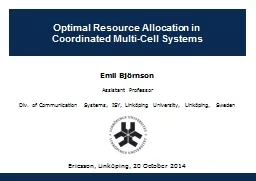PPT-Chapter 8: Water Allocation Law
Author : emmy | Published Date : 2023-09-23
Before 1200 Code of Hammurabi Justinian Code From 1200 to 1799 Spanish Water Law English Water Law From 1800 to 1847 Code Napoleon Riparian Doctrine Western US
Presentation Embed Code
Download Presentation
Download Presentation The PPT/PDF document "Chapter 8: Water Allocation Law" is the property of its rightful owner. Permission is granted to download and print the materials on this website for personal, non-commercial use only, and to display it on your personal computer provided you do not modify the materials and that you retain all copyright notices contained in the materials. By downloading content from our website, you accept the terms of this agreement.
Chapter 8: Water Allocation Law: Transcript
Download Rules Of Document
"Chapter 8: Water Allocation Law"The content belongs to its owner. You may download and print it for personal use, without modification, and keep all copyright notices. By downloading, you agree to these terms.
Related Documents














